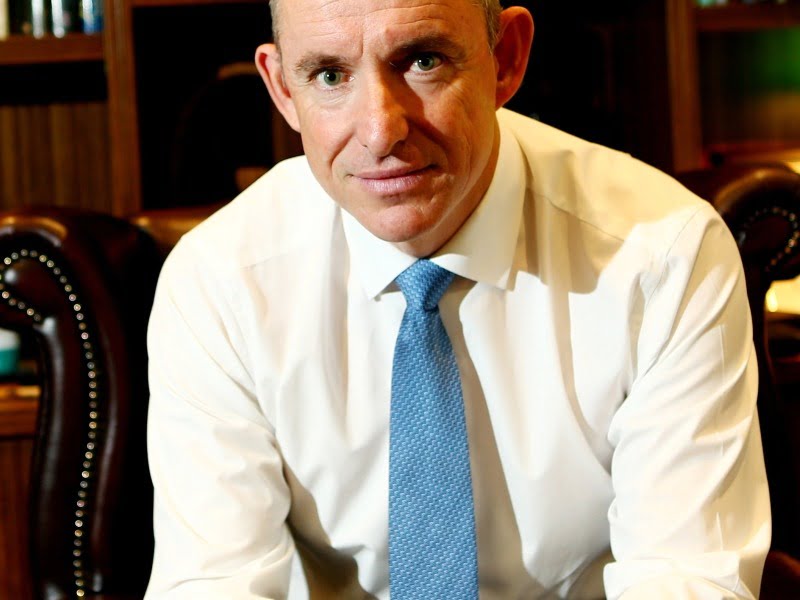The Digital Transformation Agency has been returned to the Department of Prime Minister and Cabinet less than two years after being moved to the Social Services portfolio, but the agency will remain under the control of Minister Stuart Robert.
In a complex rearrangement of reporting lines Mr Robert, who was shifted sideways from his role as government services minister to become Minister for Employment, Workforce, Skills, Small and Family Business, retains responsibility for the DTA despite it now residing in PM&C.
An order signed Governor-General David Hurley and the Prime Minister on Thursday shifting the Digital Transformation Agency (DTA) from Social Services to PM&C was revealed late Friday.
It was also revealed this week that Mr Robert had retained his role as chair of the Cabinet Service Delivery and Coordination Committee despite the ministerial reshuffle. He was also promoted onto the powerful Expenditure Review Committee.

The DTA has had a roving commission within the Abbott-Turnbull-Morrison governments.
The whole-of-government tech agency was launched in 2015, originally as the Digital Transformation Office, as a pet project of then-Communications Minister Malcolm Turnbull, who hand-picked its inaugural chief executive in Paul Shetler and continued to champion digital transformation in government when he became Prime Minister later that year.
The interim DTO was originally housed in the Department of Communications before a significant restructuring the following year saw it renamed to the DTA and moved into Prime Minister and Cabinet.
The DTA was then shifted to Social Services where it was thought that due to significant amount of IT spending by that portfolio and the key role it played in IT projects such as myGov would give the agency more clout. That decision has now been reversed.
The amendments to the Public Service Act 1999, revealed on Friday, also outline the DTA’s key functions, which have remained largely stable from previous years.
The DTA has been tasked with providing strategic and policy leadership on whole-of-government and shared ICT investments and digital service delivery, and to “develop, deliver and monitor” strategies, policies and standards for tech investment, including procurement.
It will also manage strategic coordination and oversight functions for digital and ICT investment across the life cycle of projects, manage whole-of-government digital procurement and provide advice to Minister Robert on whole-of-government digital.
The DTA is in the midst of a number of significant government tech projects currently, including the redevelopment of myGov and the whole-of-government digital identity program.
It also received widespread attention last year after leading the development of the government’s controversial COVIDSafe contact tracing app.
The agency is in the process of refreshing the government’s digital transformation strategy, with a discussion paper unveiled late last year.
The DTA’s spending on contracts with tier one management consultants increased by nearly five times in the time since Mr Robert took control of the agency in May 2019. In the 2019-20 financial year, more than $30 million in contracts were handed to Deloitte, McKinsey, KPMG and the Boston Consulting Group, compared with just over $6 million in the previous year.
The agency has also battled huge levels of staff turnover since its inception. From July 2018 to February 2020, more than 250 staff at the DTA ceased their employment, with its total headcount at 256.
In the previous 18 months, the DTA also experienced close to 100 per cent staff turnover.
Despite being created by Mr Turnbull in part to bring tech expertise back inside the public sector, the DTA has become increasingly reliant on short-term contractors and consultancy firms.
In the first eight months of the 2020-21 financial year, the DTA entered into contracts worth more than $20 million with recruiters and HR firms for temporary staff.
Clarification: An earlier version of this story stated that the Digital Transformation Agency had been shifted to the Employment portfolio. This is not the case. Although the Minister for Employment, Workforce, Skills, Small and Family Business Stuart Robert has been given responsibility for the DTA, the agency itself will be housed within Prime Minister and Cabinet.
Do you know more? Contact James Riley via Email.


The DTA is here for two reasons. The first is to tattoo every Australian with a barcode. It’s the Australian Barcode, from when you’re born until after you die. Everything. Everywhere. Forever. No exceptions. The other thing is the $10 Billion ICT spend. That has to go to the right people. Nice people. Good people. Quality people, who vote for the right, nice good quality party. That’s a nice pile of cash that TEN BILLION DOLLARS. Totally beyond scrutiny, accountability and you. And they get it all again NEXT YEAR. How good is TEN BILLION dollars ?